Contents
Guide
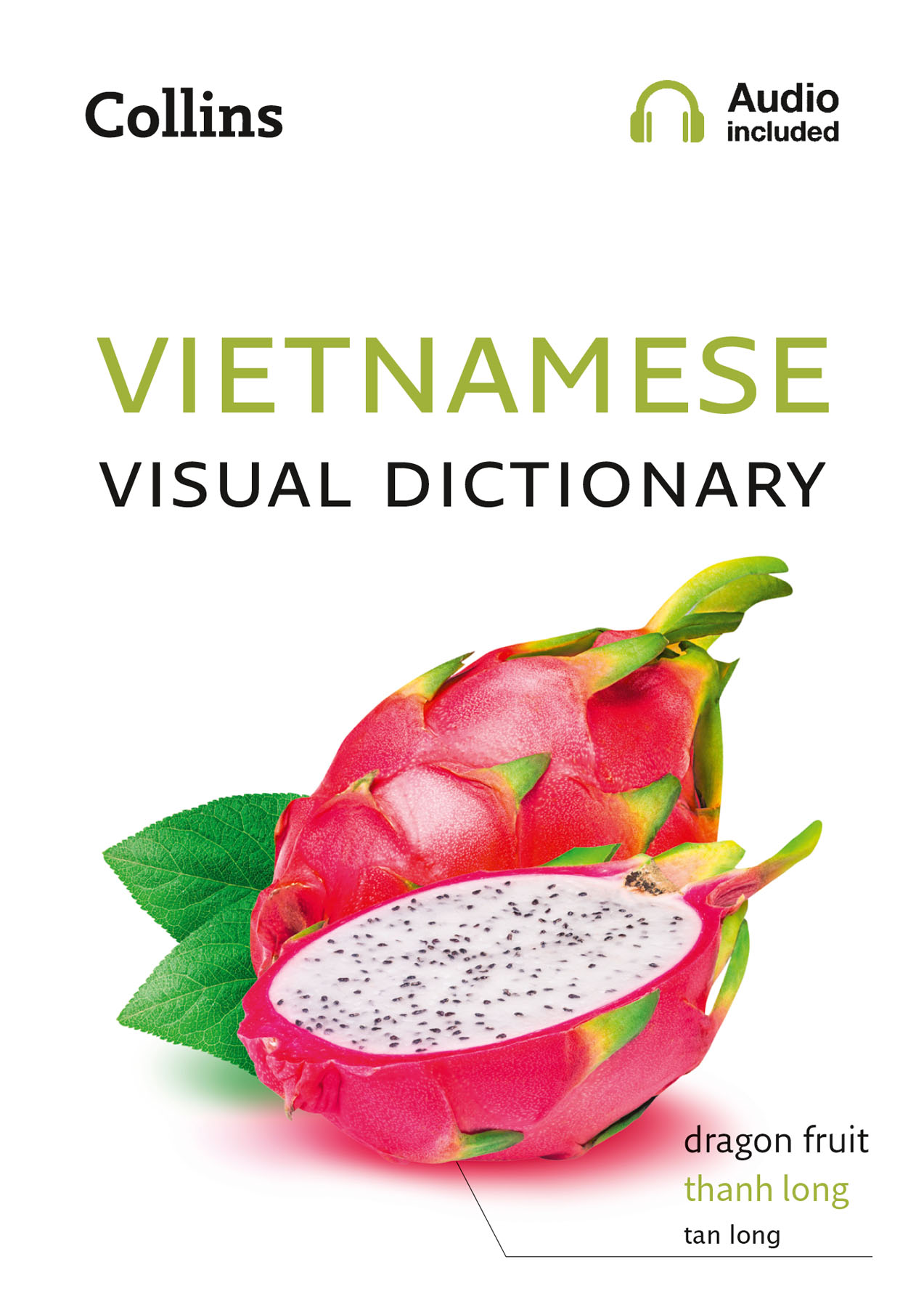
Published by Collins An imprint of HarperCollins Publishers Westerhill Road Bishopbriggs Glasgow G64 2QT First Edition 2021 HarperCollins Publishers 2021 Collins is a registered trademark of HarperCollins Publishers Limited All rights reserved under International and Pan-American Copyright Conventions. By payment of the required fees, you have been granted the non-exclusive, non-transferable right to access and read the text of this ebook on screen. No part of this text may be reproduced, transmitted, downloaded, decompiled, reverse engineered, or stored in or introduced into any information storage and retrieval system, in any form or by any means, whether electronic or mechanical, now known or hereafter invented, without the express written permission of HarperCollins. Entered words that we have reason to believe constitute trademarks have been designated as such. However, neither the presence nor absence of such designation should be regarded as affecting the legal status of any trademark. HarperCollins does not warrant that any website mentioned in this title will be provided uninterrupted, that any website will be error free, that defects will be corrected, or that the website or the server that makes it available are free of viruses or bugs.
For full terms and conditions please refer to the site terms provided on the website. A catalogue record for this book is available from the British Library If you would like to comment on any aspect of this book, please contact us at the given address or online. E-mail  www.facebook.com/collinsdictionary
www.facebook.com/collinsdictionary  @collinsdict Ebook Edition February 2021 ISBN: 9780008399672 Version: 2020-12-15
@collinsdict Ebook Edition February 2021 ISBN: 9780008399672 Version: 2020-12-15
CONTENTS
Whether youre on holiday or staying for a slightly longer period of time, your
Collins Visual Dictionary is designed to help you find exactly what you need, when you need it. With over a thousand clear and helpful images, you can quickly locate the vocabulary you are looking for.
The Visual Dictionary includes:- 10 chapters arranged thematically, so that you can easily find what you need to suit the situation
- images illustrating essential items
- YOU MIGHT SAY common phrases that you might want to use
- YOU MIGHT HEAR common phrases that you might come across
- VOCABULARY common words that you might need
- YOU SHOULD KNOW tips about local customs or etiquette
USING YOUR COLLINS VISUAL DICTIONARY The points set out below will help to make sure that your
Collins Visual Dictionary gives you as much help as possible when using Vietnamese:
1)How to address people politely Vietnamese people use various terms to address each other in conversations. Personal pronouns depend on the context, age, gender, family relationships, and so on.
In formal contexts, you can address your peers as anh (ann) (literally older brother) or ch (chee) (literally older sister), and people senior to you as ng (ong) (literally grandfather but can also mean Mr) or b (bah) (literally grandmother but can also mean Mrs). However, Vietnamese people never address each other by their surnames; they use the title (Mr, Mrs etc) followed by the first name instead. In informal contexts, the choice of personal pronoun depends on the relationship between the two people. When speaking to a person who is roughly the same age as you, bn (ban) (literally friend) is the most common pronoun. Depending on the age of the person you are speaking to, you can also use kinship terms to address them as if they were relatives. 2)Classifiers Classifiers are a special feature of Vietnamese and are mandatory when using a noun with a numeral or referring to a specific noun. 2)Classifiers Classifiers are a special feature of Vietnamese and are mandatory when using a noun with a numeral or referring to a specific noun.
For example, one table is mt ci bn (mot kai ban) and this orange is qu cam ny (kwar cam nay). In these cases, the classifiers are ci and qu respectively. There are many different classifiers in Vietnamese, used for different types of objects. The most common classifier is ci and this can be treated as a default option when you dont know which is the correct one to use. 3)Tones Vietnamese is a tonal language, meaning that each word is pronounced with a different pitch of voice. The same word said in different tones will have different meanings.
There are six tones in standard Vietnamese, five of which are indicated by signs above or below the vowel. The following table is an example of the different tones of the sequence la (lar).
| TONE NAME | SIGN | PITCH LEVEL | EXAMPLE | MEANING |
| khng | no sign added | high level tone | la | shout |
| huyn | ` (above the letter) | low falling tone | l | to be |
| hi | (above the letter) | low falling-rising tone | l | exhausted |
| ng | ~ (above the letter) | high falling-rising tone | l | tap water |
| sc | (above the letter) | high rising tone | l | leave |
| nng | . (below the letter) | low short falling tone | l | strange |
Listening to the free audio resource available with this dictionary will help you with your pronunciation of Vietnamese.
FREE AUDIO We have created a free audio resource to help you learn and practise the Vietnamese words for all of the images shown in this dictionary. The Vietnamese words in each chapter are spoken by native speakers, giving you the opportunity to listen to each word twice and repeat it yourself.
Download the audio from the website below to learn all of the vocabulary you need for communicating in Vietnamese. www.collinsdictionary.com/resources
Whether youre going to be visiting Vietnam, or even staying there for a while, youll want to be able to chat with people and get to know them better. Being able to communicate effectively with acquaintances, friends, family, and colleagues is key to becoming more confident in Vietnamese in a variety of everyday situations.

umbrella oh 1. green xanh l cy sang lah kay 2. red dor 4. yellow vng vang 5. white trng chang 6. black en den
THE BASICS | CC T VNG C BN
Hello. Xin cho. sin chow Hi! Cho! chow Good morning/evening. sin chow Hi! Cho! chow Good morning/evening.
Cho bui sng/ti. chow boo-ee sang/toy Good afternoon. Cho. chow Good night. Chc ng ngon. chook ngoo ngon See you soon.
Hn sm gp li. hen som gap lie See you tomorrow. Hn gp bn vo ngy mai. hen gap ban vow ngie my Bye! Tm bit! tam bee-it Have a good day! Chc bn mt ngy tt lnh! chook ban mot ngie tot lann Yes. Vng. Khng. kong I dont know. kong I dont know.
Ti khng bit. toy kong bee-it please xin vui lng sin voo-ee long Yes, please. Vng, lm n. vung, lam on Thank you. Cm n bn. kam on ban No, thanks.
Khng, cm n. kong, kam on Excuse me. Xin li. sin loy Sorry? Xin li? sin loy Im sorry. Ti xin li. Khng c g. kong cor zee I dont understand. kong cor zee I dont understand.
Ti khng hiu. toy kong hee-u

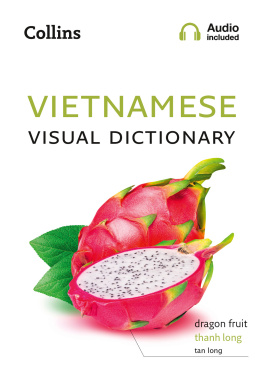
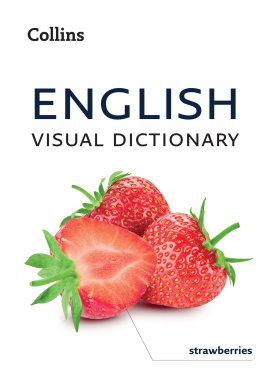
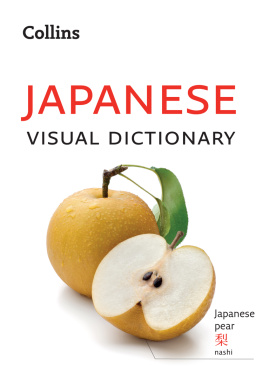
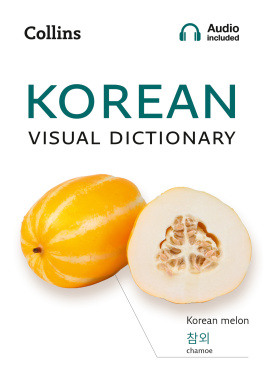
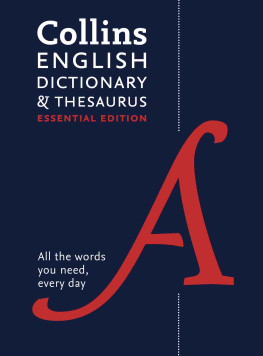



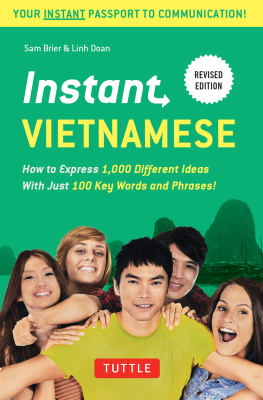
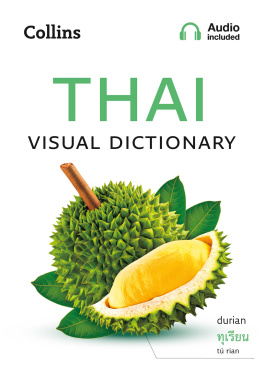
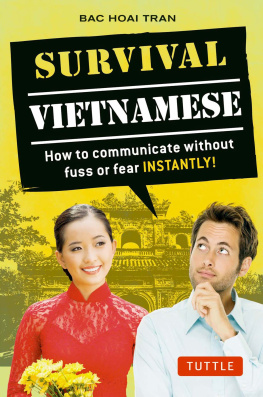
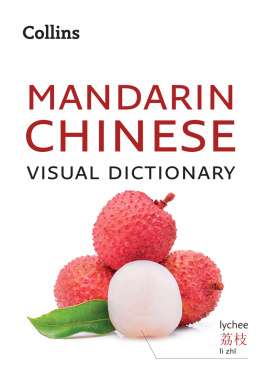


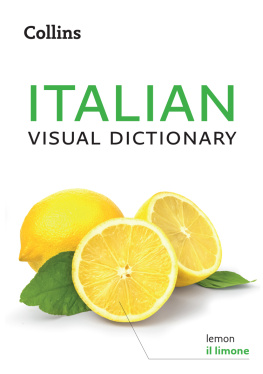
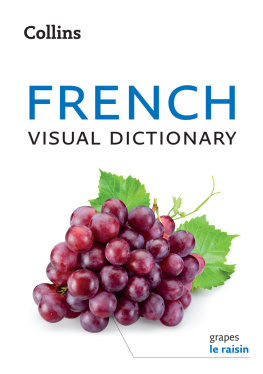

 www.facebook.com/collinsdictionary
www.facebook.com/collinsdictionary  @collinsdict Ebook Edition February 2021 ISBN: 9780008399672 Version: 2020-12-15
@collinsdict Ebook Edition February 2021 ISBN: 9780008399672 Version: 2020-12-15 umbrella oh 1. green xanh l cy sang lah kay 2. red dor 4. yellow vng vang 5. white trng chang 6. black en den
umbrella oh 1. green xanh l cy sang lah kay 2. red dor 4. yellow vng vang 5. white trng chang 6. black en den